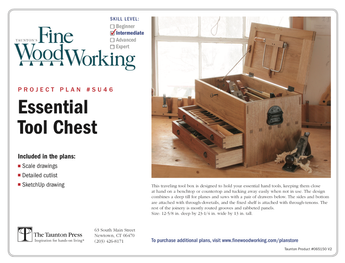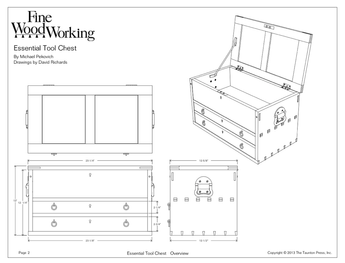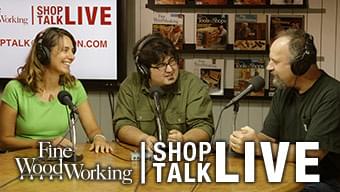Beveled Mirror Attachment in Frame&Panel
Dear Woodheads,
I’m working on an armoire-style entertainment center. I have chosen to put beveled mirrors in the two doors to mimic an old armoire. The look of the unit is two doors above one drawer. The doors are about 24″ wide and 56″ long. They will be frame and panel with the mirrors being the panel. Do you guys have any suggestions for attaching the mirror to the frame? Keep in mind that the mirrors will probably have to be removed at some time either from being broken or to be re-silvered. Short of looking at a bunch of antiques, I was hoping I would get some answers here.
Thanks,
Scott A. Walterman















Replies
When I install glass or mirrors in doors, I rabbet the door frame from the back side and install the glass with keeper strips. Mirrors get a backing panel before installing the strips. I install the strips with screws where dimension permits, or brads where it doesn't. I work from the backside because I can use full square strips which are much easier to work with than a profile and work the profile on the front of the frame.
Those will be some weighty doors, you'll need lots of joint and hinge strength.
Dick,
When you make the rabbet, do you angle the bottom of it so that it matches the angle of the bevel on the mirror?
What does the backing panel do for you with a mirror, and how thick do you usually make your backing panel?
Thanks,
Scott A. Walterman
Scott,
It's just my opinion but I'm not a big fan of glass stop being placed on the back of a door. I think it's one of those things that started with cope-and-stick shaper cutters. I've yet to see a cleanly cut rabbet where half a dado side was removed and it makes a mediocre stub-tenon joint even weaker. It's just a little more effort to make real mortise and tenon joints with the rabbet already cut in the stiles and rails. This calls for tenon shoulders at different locations on the front and back but it's relatively easy. Done this way the glass stop can be placed on a door front and have a number of different profiles. These profiles can add needed detailing including visually weighted stepped bolections that offer often needed design features and flexibility. I'd want substantial tenons in a mirrored door at any rate.
Larry,
This calls for tenon shoulders at different locations on the front and back but it's relatively easy.
Could you describe a little more here by what you mean about different location on the front and back? I'm not seeing that clearly.
Thanks,
Scott
Scott, I wouldn't angle the rabbet because the mirror will fit against the shoulder without one. I don't think there is any gain by the extra work. I use backing panels as a safety precaution to carry the racking load and provide a bit of impact protection, also to protect the silvering. The thickest panel that will fit is good, although I don't think anything below 1/4" is useful or beyond 1/2" is neccesary.
Mirrors are generally fairly thin (although your beveled mirror should be a little thicker) and are rarely tempered. Your application is hanging substantial glass well within the range of bouncing kids and pets and tripping adults so I think precautions are warranted.
Rabbets can be cut on the back or front as a matter of personal preference, good mortise and tenon joints are a must.
This forum post is now archived. Commenting has been disabled